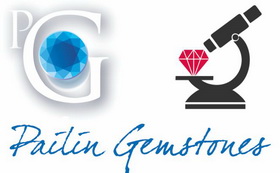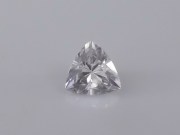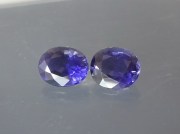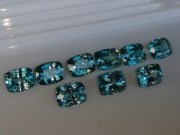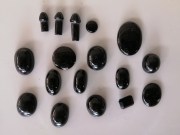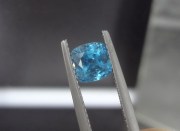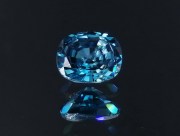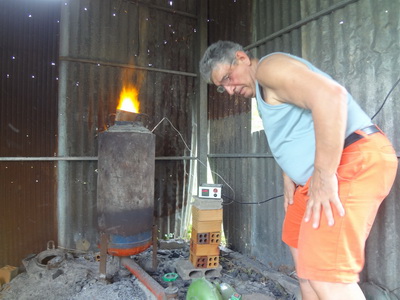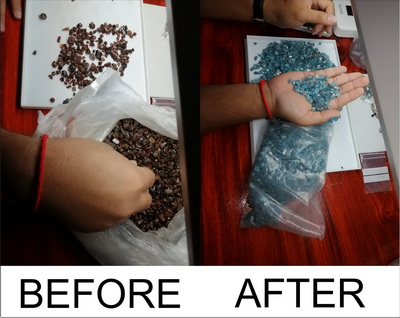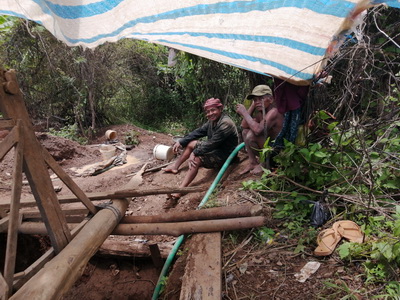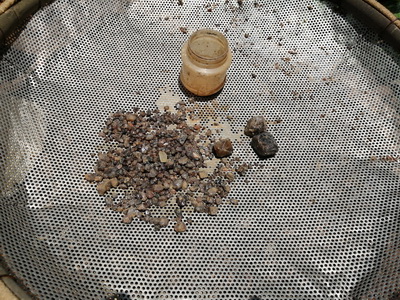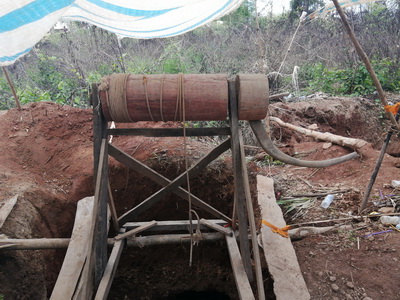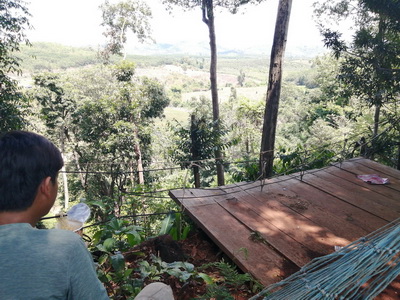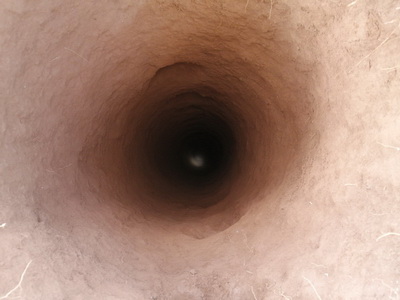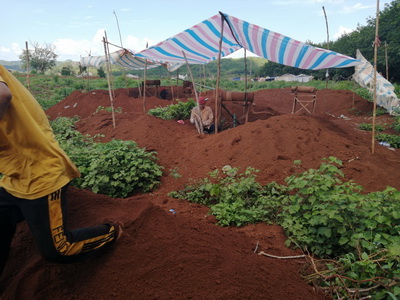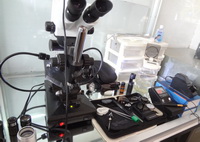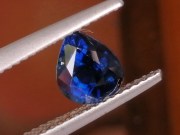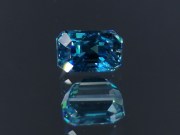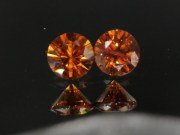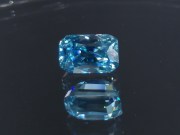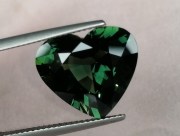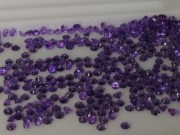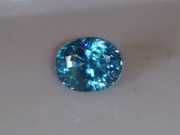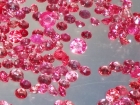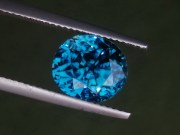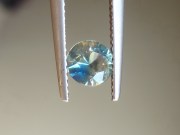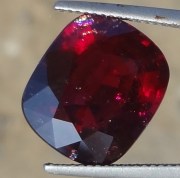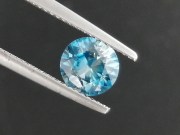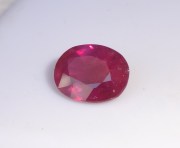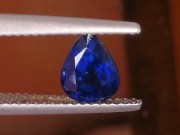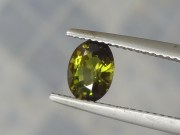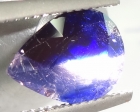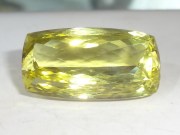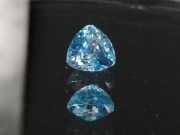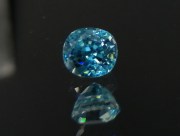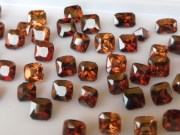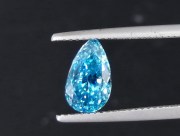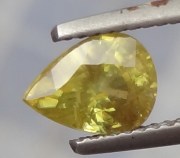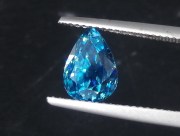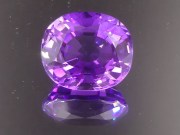About blue zircon loose gems color grading, mining and heating:
As you probably know natural blue zircon doesn't exist in nature, only certain types of zircon can be charcoal heated to blue. Up until recently the only blue zircon in the world was from Cambodia but now we can find some from Nigeria (weak color) and from Sri Lanka (weak refraction index). So Cambodian blue zircon, while not unique anymore, is still the best quality blue zircon due to its superior refraction (shine) and color density (hue and saturation of blue in the gem).
Along the years we received many gemologists and zircon traders who came to Cambodia to study heating and processing of natural blue zircon, among which you may recognize the famous gemologist and gemstones heating specialist Ted Themelis from Bangkok. That time Ted came to study primarily the potential of heating green Sri Lanka Zircon.
Below you can see various mines of natural zircon in the Ratanakiri region. You can notice that, due to legal restrictions, mining is tolerated as long as it involves 100% manual labour. The use of excavators, pumps and electric tools is not allowed. This ensures that production is slow and we can continue to exploit this blue zircon for many years to come, unlike what was done in Pailin for sapphire and ruby.
Purely About Blue Zircon Colors and Our Own Color Grading:
- BUYING GUIDE -
Blue zircon is never a pure blue, all blue zircon has greenish tints and it is impossible to get a pure blue like royal or navy blue in sapphire. But good quality zircon has a high dispersion and you will often see the color split between high hue navy blue and turquoise blue-green on the other side. This is normal.
There is a big difference of price between deep blue zircon and pale (light) blue zircon. Also there is a big price difference between a greenish blue and a higher hue blue.
This doesn't mean that lighter blue zircon is less attractive, in reality they seem shinier than the dense blue gemstones. But they are less rare, easier to find and produce.
So from the rarity of the density of blue in some gemstones, or the lack of greenish in others, will come the price of the blue zircon gem.
Or course the quality of cut, the weight of the gem are also important, but at equal quality of cut, clarity and carats, denser colors or colors that have less green in its blue will cost more... and sometimes much more with exceptional blue quality.
There is no official recognition of color grading and because, depending on conditions (lighting, gem size, camera, monitor etc...), it is very hard render the exact color from the gemstone all the way to your eye.
So we developped a grading system with Grade A representing the deepest bleuest gemstones, to E being very pale and greenish with white color zoning or nearly white; D being a very shiny pastel blue with or without zoning, C being a light sky blue, B representing a good Swiss blue. Exceptionally rare deep blue might be graded A+ or AAA. These are collection gemstones.
And again, because of these uncontrollable conditions of lighting and monitor color rendering, we can't show you examples of colors here because what we see isn't exactly what you see in your conditions. Rather you should consider our color grading as a reference to the rarity of the blue zircon color, hence the according price we put on the gemstone.
You could imagine that for each AAA grade zircon found 10 A grade are also found, and 100 B grade, 1000 C grade and 10,000 D grade. Of course this is not an exact ratio, but it gives you an idea as per why we have to sell our AAA grade blue zircon much more expensive than a C or D grade. It is just because it is much harder and costly for us to replace that gemstone in our stock.
But lower grading isn't necessarily a worse gem, It does indeed indicate the rarity of the blue, but not attractive the gem can be as some lower grades usually seem so shine much more and really sparkle like diamond while the hue and density of higher grades tend to soften the shine.
| GRADE | COLOR | REMARKS |
| AAA and A+ | Very deep blue or turqoise blue | Very rare, represents less than 0.001% of the supply, sometimes a little dark |
| A | Deep blue | Rare, the best colors, represents 0.1% of the supply |
| B | Strong blue | This is the normal color for good blue zircon, represents 2% of the supply |
| C | Sky blue | Good and soft blue color, represents 10 to 15% of the supply |
| D | Weak blue or blue+white | Usually very shiny, really shines like diamond, more than 50% of supply |
| E | Not really blue | Sometimes blueish white or blue+yellow or greenish, some can look good |
As a footnote, zircon is the oldest mineral ever carbon-dated on earth, nothing has been carbon-dated to an earlier time than zircon; also zircon is the only gemstone to shine nearly as much as diamond but is actually more rare than diamond; finally blue zircon is the astral birthstone for December, and guess when I was born :) .
